The Byzantine Empire ~330-1453AD
Contemporary Events
- Constantinople (now Istanbul) was selected to be the Eastern Roman Empire capital in 330.
- Located at the crossroads between East and West, the capital and empire became a rich metropolis due to control of key trade routes.
- The empire grows rapidly until the 7th Century, after which it begins to diminish in size. By the mid 9th Century it had shrunk to include only the Greek peninsula and modern-day Turkey.
- 1435, after much unrest at the hands of various groups, the Ottoman Turks captured Constantinople then dissolving the empire once and for all.
The Byzantine Empire
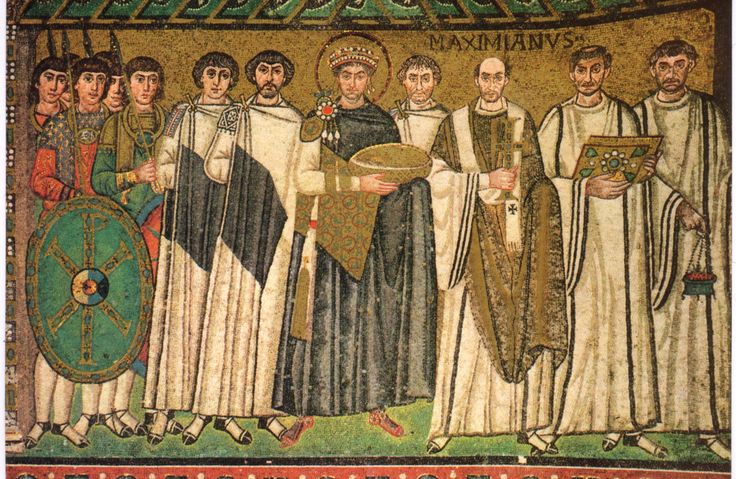
Byzantine Emperor Justinian I (527 – 565) and his court depicted on the walls of the Basilica of San Vitale in Ravenna, Italy.
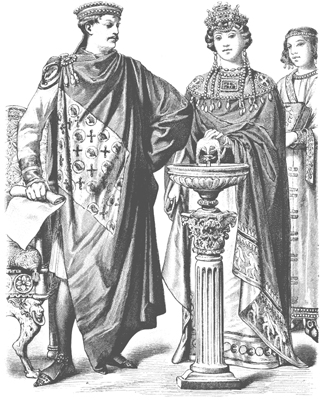
Emperor Justinian with Empress Theodora of the Eastern Roman Empire (Byzantium) 500s AD. Etching published in Historic Costume in Pictures by Braun & Schneider, Dover Publications.
This nineteenth century costume plate (published by Braun & Schneider) depicts Emperor Justinian and Empress Theodora.
Both figures are wearing paludamentum-semicircular or tradezoidal capes that pinned in place on the right shoulder. Justinian prominently displays a rectangular shaped embroidered “patch” (tablion) on the front of his paludamentum.
We also are able to see the knee length hem and sleeve of his dalmatic (outer tunic). On his legs he is wearing hose, which is a variation of the “barbaric” bifurcated garments worn by Germanic tribes of the time. He would be wearing a tunic underneath his dalmatic. Theodora is wearing a wide collar reminiscent of those seen in Egyptian clothing. Additional garments in her ensemble bear resemblance to those of her husband.
These two gentlemen demonstrate the key difference between the paludamentum and the paenula.
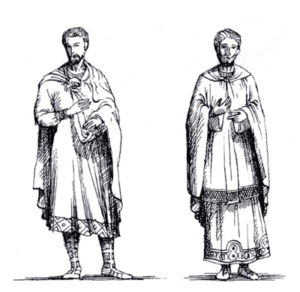 Both outergarments were worn during the Roman empire discussed during the last unit. The paenula is a cape made out of
Both outergarments were worn during the Roman empire discussed during the last unit. The paenula is a cape made out of
a full circle of cloth, with an opening for the head. It was often hooded. (The construction of a paludamentum is discussed above.) The paenula eventually disappears from use, while the paludamentum becomes the more widely used of the two.
Notice that the man on the right is wearing a short dalmatic over a longer tunic, while only the dalmatic is visible in the man on the left’s attire.
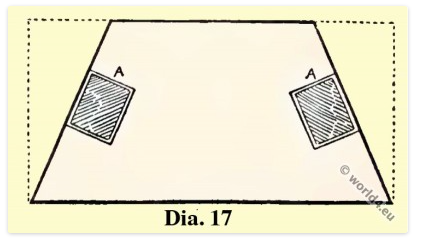
Shape of the paludamentum. http://world4.eu/byzantine-costume-history-5th-century-fashion/
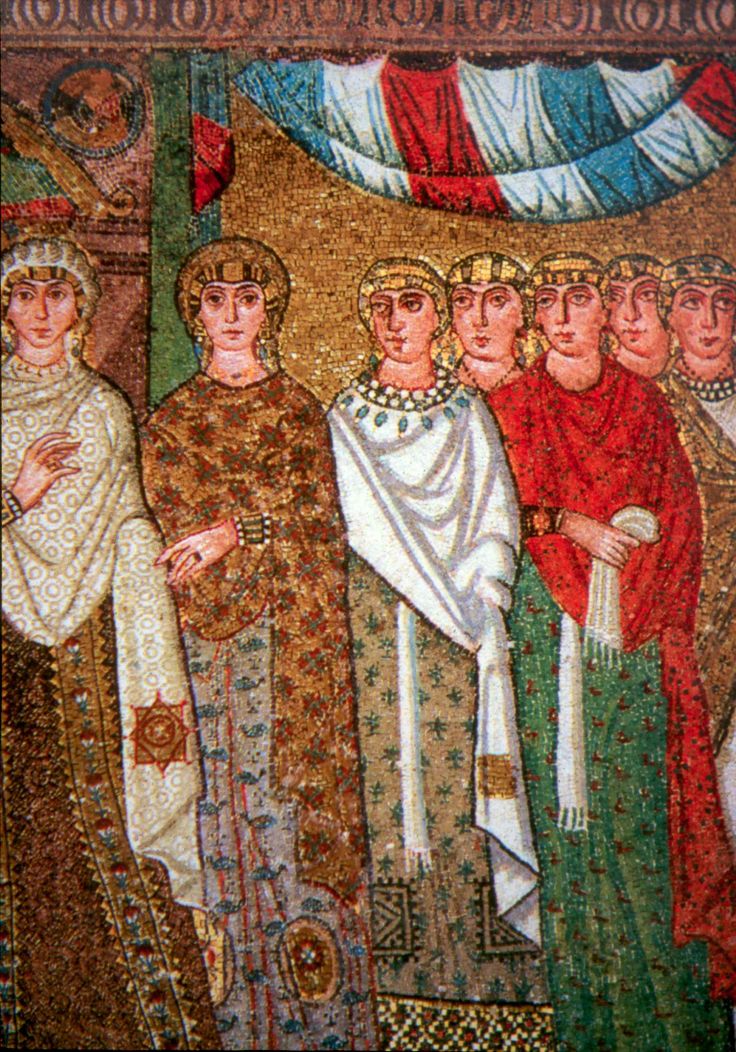
Ladies of Theodora’s court. This image is a detail of a mosaic at the Basilica of San Vitale
 This noble lady has roundels (embroidered circular “patches” applied as decoration on Byzantine dalmatics and tunics) just above her hem. She is also wearing the pallium/lorum (in gold in this drawing) with a wide collar placed on top. Some clothing history scholars believe that the Roman toga evolved into this garment.
This noble lady has roundels (embroidered circular “patches” applied as decoration on Byzantine dalmatics and tunics) just above her hem. She is also wearing the pallium/lorum (in gold in this drawing) with a wide collar placed on top. Some clothing history scholars believe that the Roman toga evolved into this garment.
She has a palla with a star-like segmentae draped over her left arm. We can see just a little bit of her tunic peeking out from underneath the wider sleeve of her dalmatic on her right arm. She wears red pointed shoes. Red shoes were only worn by the Empress.
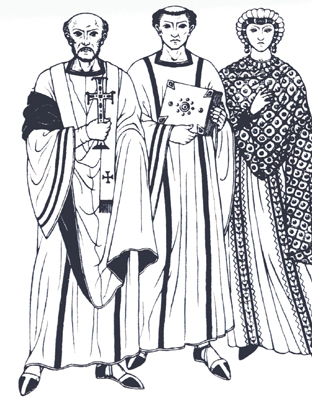
Byzantine costume: liturgical garments (tunics and dalmatic). Woman (right): heavily decorated palla, which remains unchanged form Ancient Roman Empire. (secondary source)
The two men pictured here are wearing Byzantine liturgical garments. Both wear the tunic and dalmatic (decorated with clavi in both of these cases). The man on the left also wearing a chausable (a circular poncho-like garment without a hood) and another version of the pallium/lorum (the scarf-like cloth with the cross and fringe hanging around his neck). This version of the pallium/lorum is a 6 inch band that is believed to also have evolved from the Roman toga. Initially it was quite long, and wrapped around the body in a manner similar to the Roman toga. Later, it simply hung around the neck as pictured here. It is possible to see his narrow tunic sleeve and wide dalmatic sleeve on his right arm.
The woman standing on the right is wearing a heavily decorated palla, which remains unchanged from the Ancient Roman Empire.
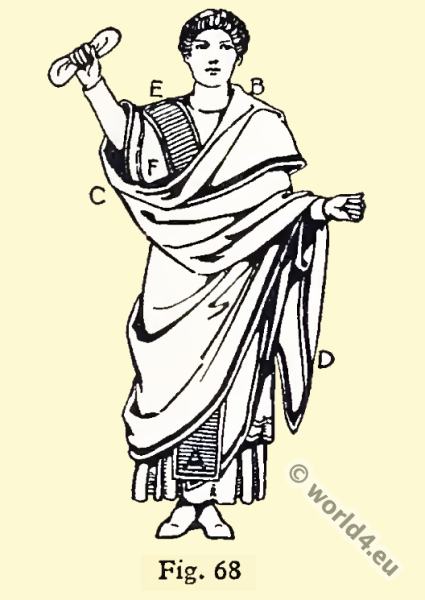
The evolution of the toga. http://world4.eu/byzantine-costume-history-5th-century-fashion/
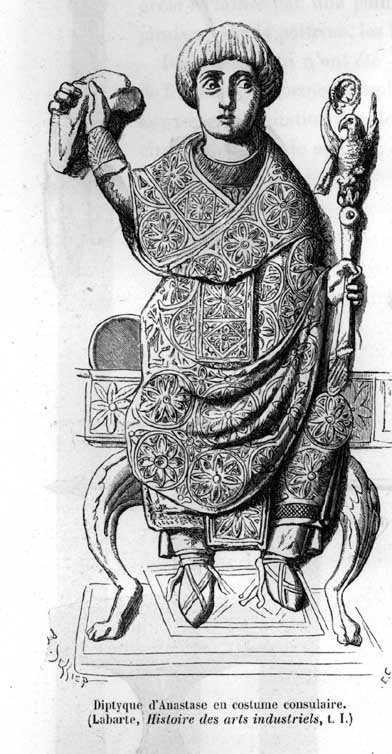
Emperor Anastase in consular dress, a late toga.
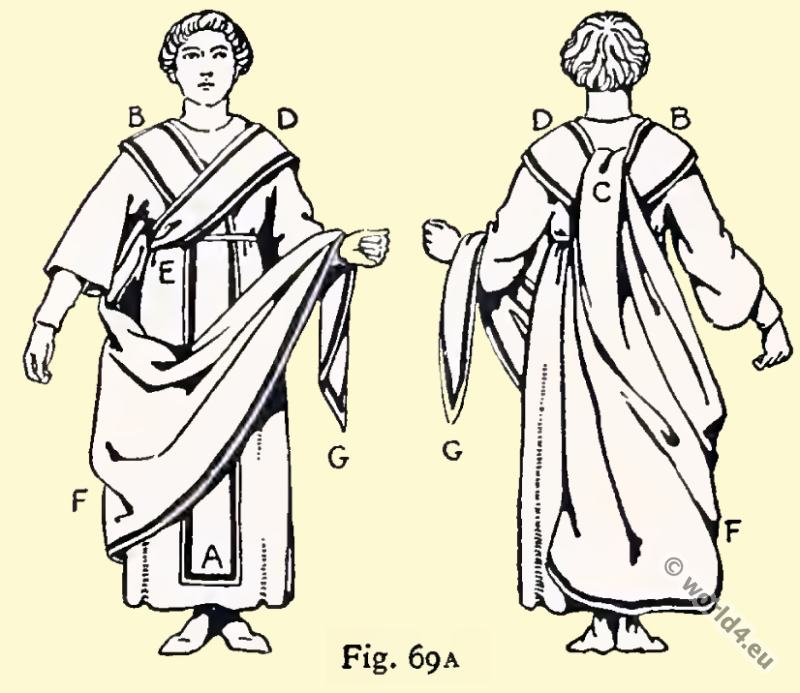
The evolution of the toga. http://world4.eu/byzantine-costume-history-5th-century-fashion/
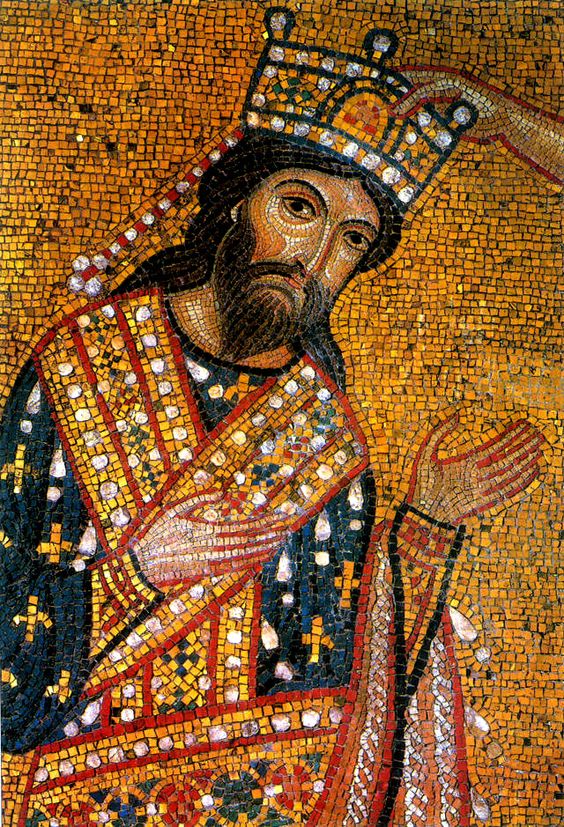
This emperor wears the pallium or forum evolution of the toga.
The Hellenic-American Cultural Museum
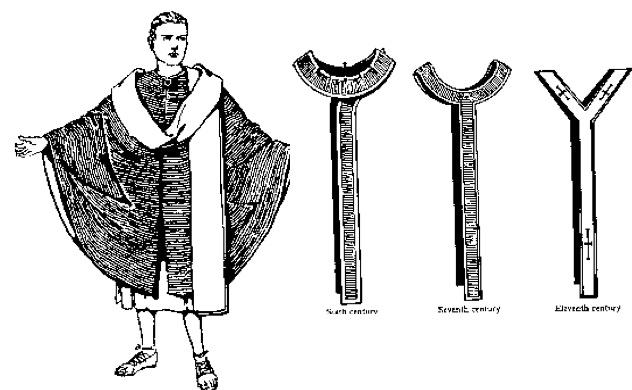
Pallium/lorum towards the end of its evolution. The three versions on the right are dated to the 6th, 7th and 11th centuries respectively.
Quick Review
TYPE OF DRESS: tailored: cut and sewn, but very body concealing.
TEXTILES: Silk is prolific due to control of trade routes to the East. Some wool. Linen was used for layers closest to skin. Heavily embroidered patches and textiles. Very ornate fabrics.
SILHOUETTE SHAPE: rectangular. The natural hourglass is nearly completely concealed. Tunics are usually not girdled, but hang full from the shoulders.
BASIC GARMENTS: Layers of ornate tunics. Men wore a bifurcated garment on the lower body, women did not. Female tunics are longer, men’s are shorter. Various capes (paludamentum, pallas, etc). The toga evolves through the pallium/lorum to wide collar to a narrow scarf.
MOTIVATIONS FOR DRESS: Status and protection (supernatural). Display of wealth and display of Christian motif. Of course, decoration.
KEY IDENTIFIERS: Heavily ornamented tunics, embroidered patches (tablion, roundels, segmentae) on tunics and outer garments (especially paludamentum). Lots of used of gold embroidery, christian motif, and pearls.
Recent Comments